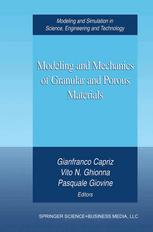

Most ebook files are in PDF format, so you can easily read them using various software such as Foxit Reader or directly on the Google Chrome browser.
Some ebook files are released by publishers in other formats such as .awz, .mobi, .epub, .fb2, etc. You may need to install specific software to read these formats on mobile/PC, such as Calibre.
Please read the tutorial at this link: https://ebookbell.com/faq
We offer FREE conversion to the popular formats you request; however, this may take some time. Therefore, right after payment, please email us, and we will try to provide the service as quickly as possible.
For some exceptional file formats or broken links (if any), please refrain from opening any disputes. Instead, email us first, and we will try to assist within a maximum of 6 hours.
EbookBell Team

0.0
0 reviewsSoils are complex materials: they have a particulate structure and fluids can seep through pores, mechanically interacting with the solid skeleton. Moreover, at a microscopic level, the behaviour of the solid skeleton is highly unstable. External loadings are in fact taken by grain chains which are continuously destroyed and rebuilt. Many issues of modeling, even of the physical details of the phenomena, remain open, even obscure; de Gennes listed them not long ago in a critical review. However, despite physical complexities, soil mechanics has developed on the assumption that a soil can be seen as a continuum, or better yet as a medium obtained by the superposition of two and sometimes three con and the other fluids, which occupy the same portion of tinua, one solid space. Furthermore, relatively simple and robust constitutive laws were adopted to describe the stress-strain behaviour and the interaction between the solid and the fluid continua. The contrast between the intrinsic nature of soil and the simplistic engi neering approach is self-evident. When trying to describe more and more sophisticated phenomena (static liquefaction, strain localisation, cyclic mo bility, effects of diagenesis and weathering, ..... ), the nalve description of soil must be abandoned or, at least, improved. Higher order continua, incrementally non-linear laws, micromechanical considerations must be taken into account. A new world was opened, where basic mathematical questions (such as the choice of the best tools to model phenomena and the proof of the well-posedness of the consequent problems) could be addressed.